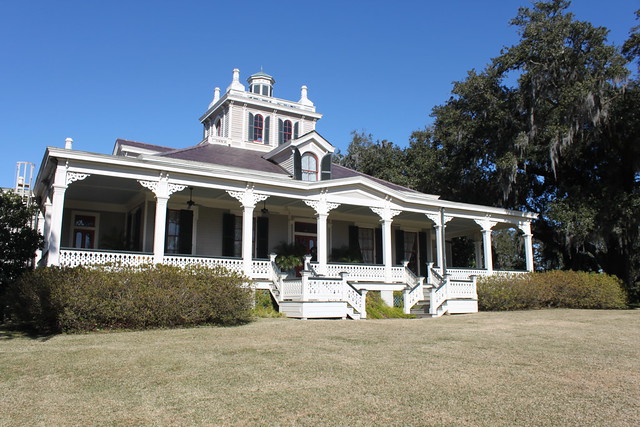On a recommendation from a local, we went out of our way to visit Rip Van Winkle Gardens.

A video about the property is shown in the visitor center. You can watch it here.
First, we toured the Joseph Jefferson Mansion -- an 1870 Southern mansion built for its namesake near Lake Peigneur. Picture-taking was not permitted inside the house, so you'll have to visit yourself to see what's inside.
 |
| The Joseph Jefferson Mansion (photo by Joseph a) |
After touring the home, we set out to explore the beautiful gardens.
We met a local frog as we walked the gardens. The frog didn't seem to be as happy to meet us as we were to meet it; but it did pose for a couple photos before it went on its way.
From the shores of Lake Peigneur, we saw a chimney sticking out of the water. This chimney belongs to a second house on the property that was destroyed in 1980 when a Texaco oil rig accidentally drilled into the Diamond Crystal salt mine under the lake.
After walking the gardens, we had a bit of difficulty leaving the property. A Jefferson Island resident blocked our exit. Everywhere I tried to drive, this resident walked in front of the car, and stood, and stared at us.
Only after offering him a hug did he move out of the way.



























































